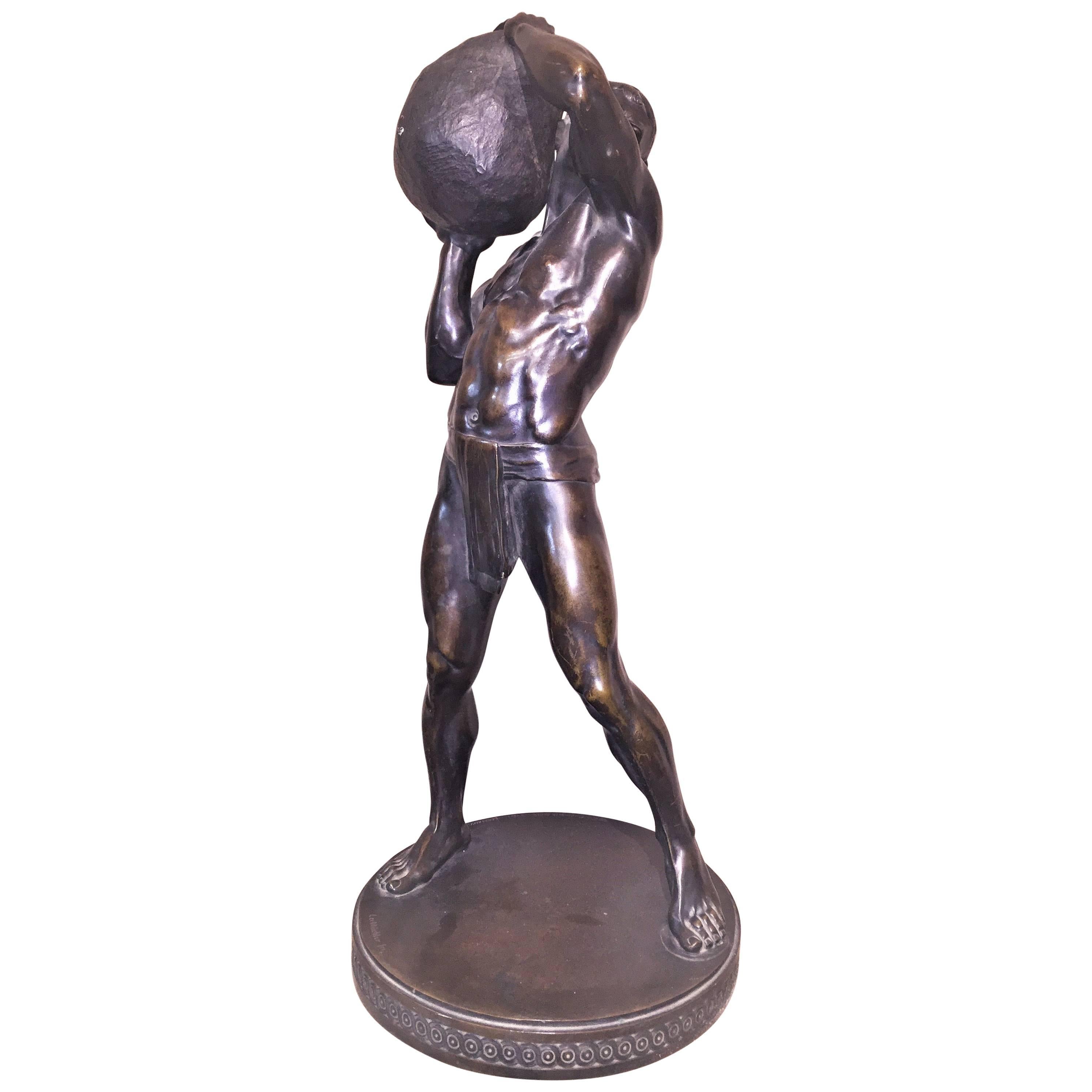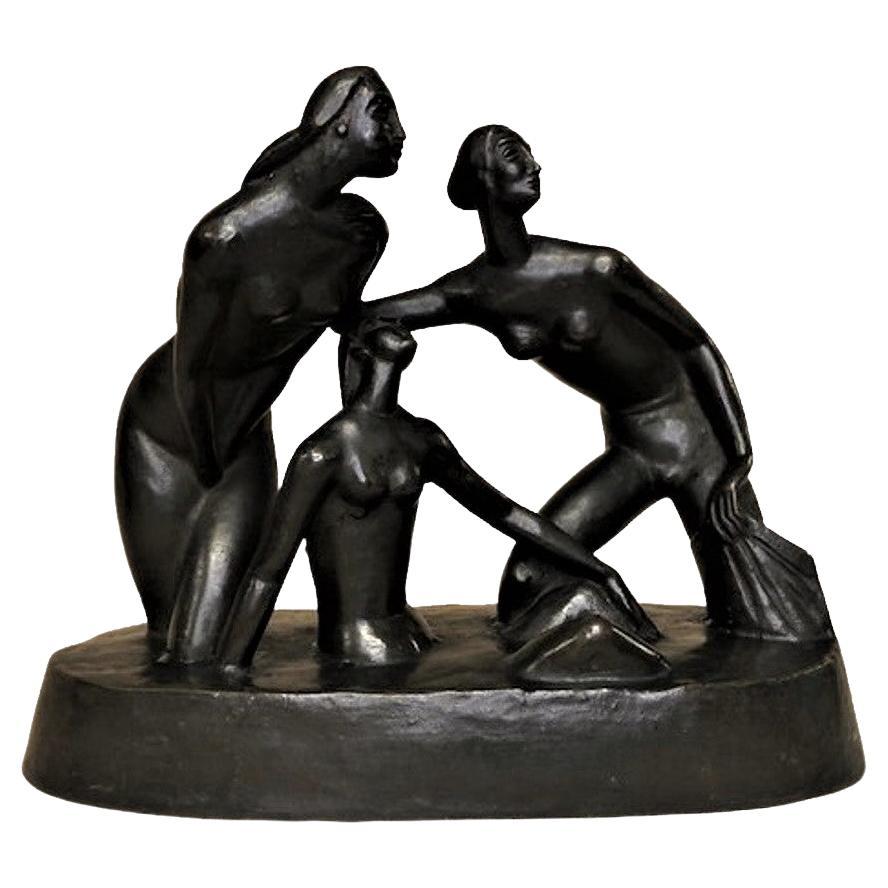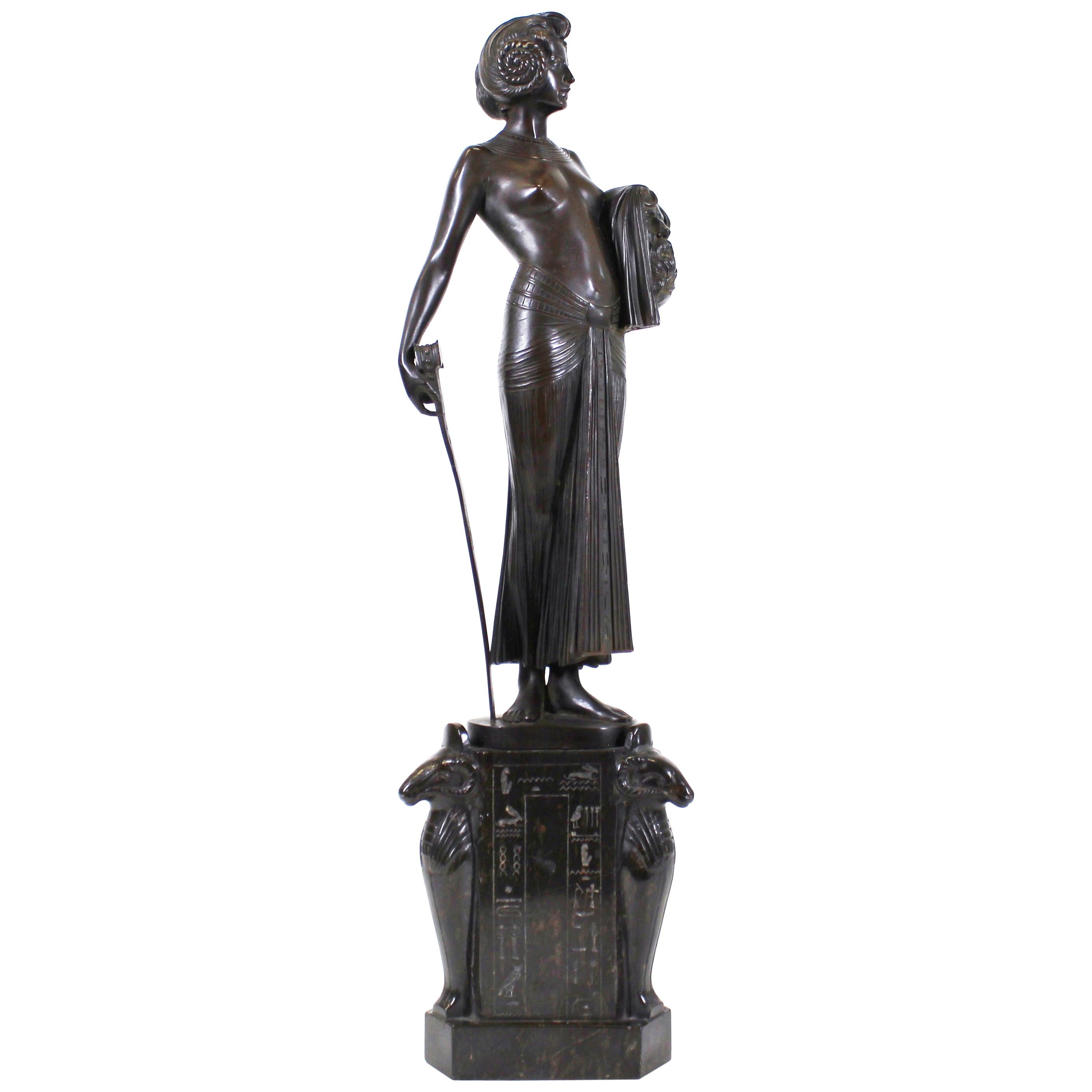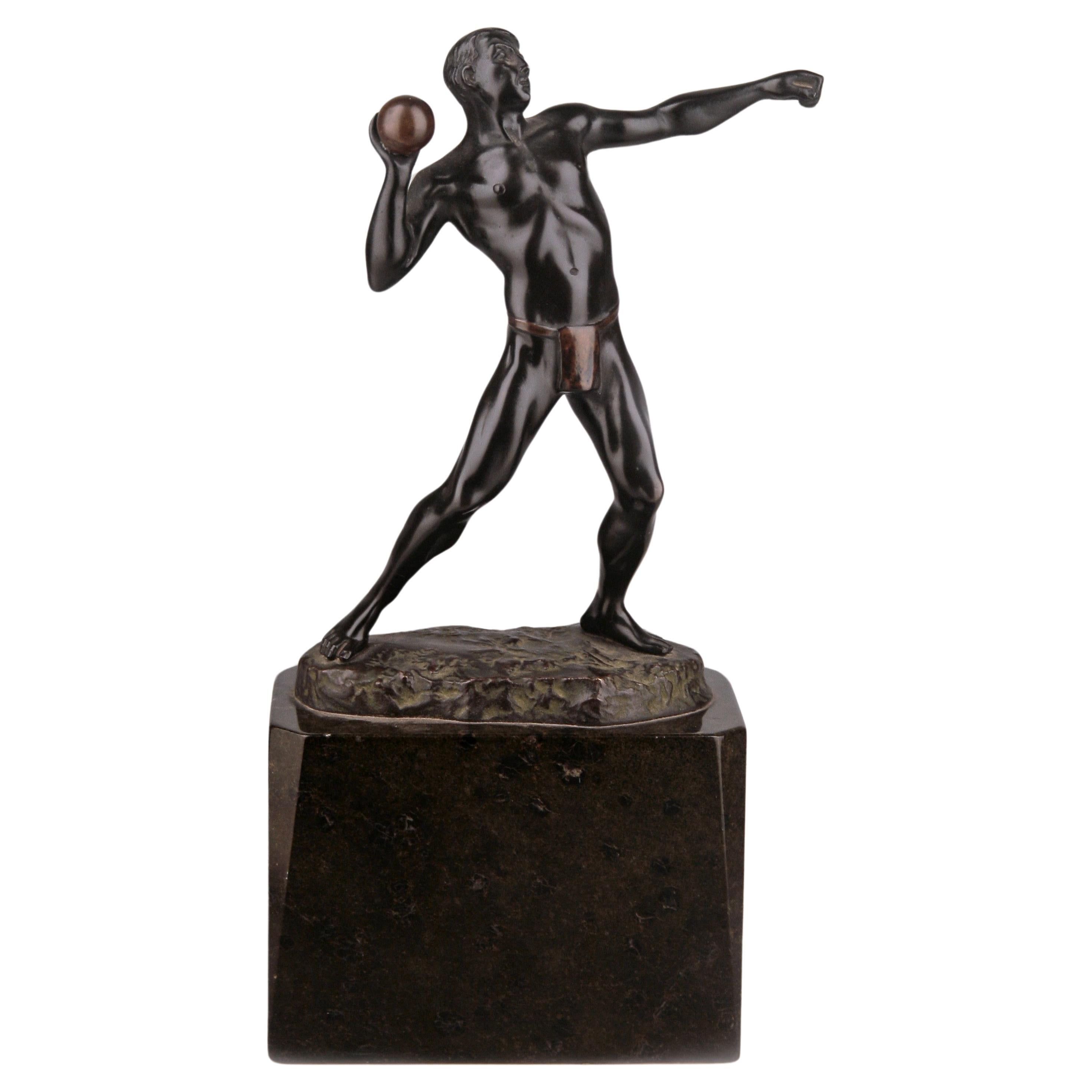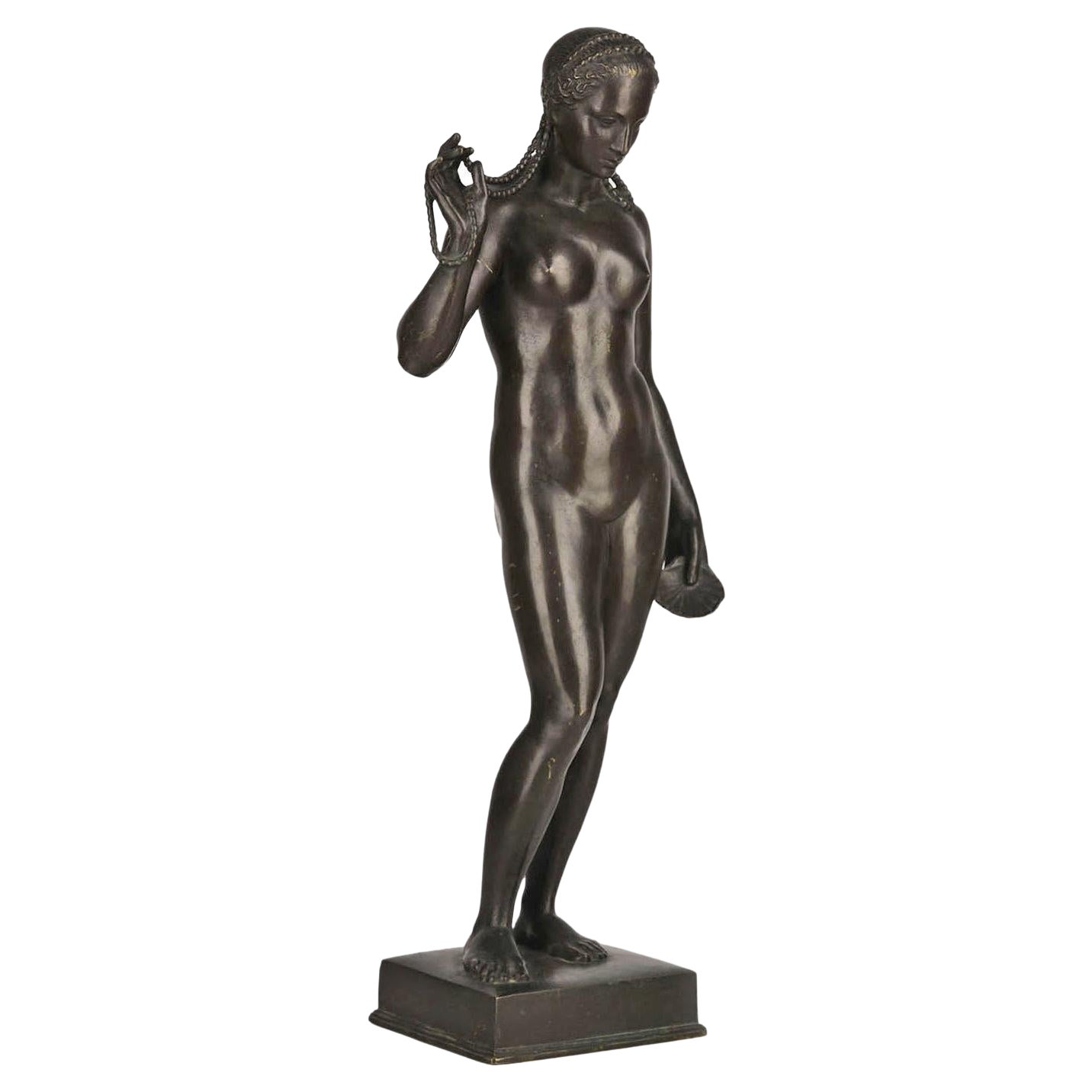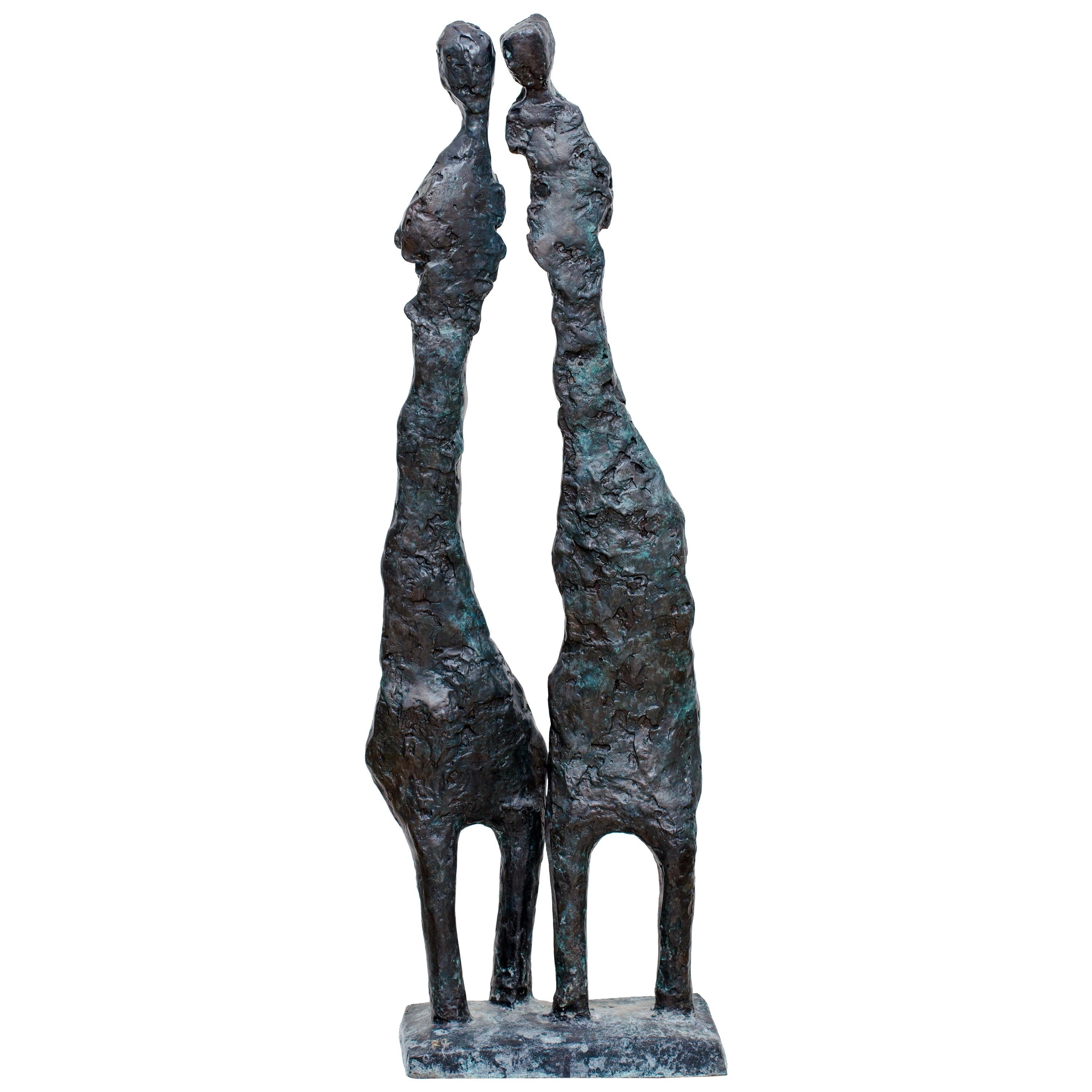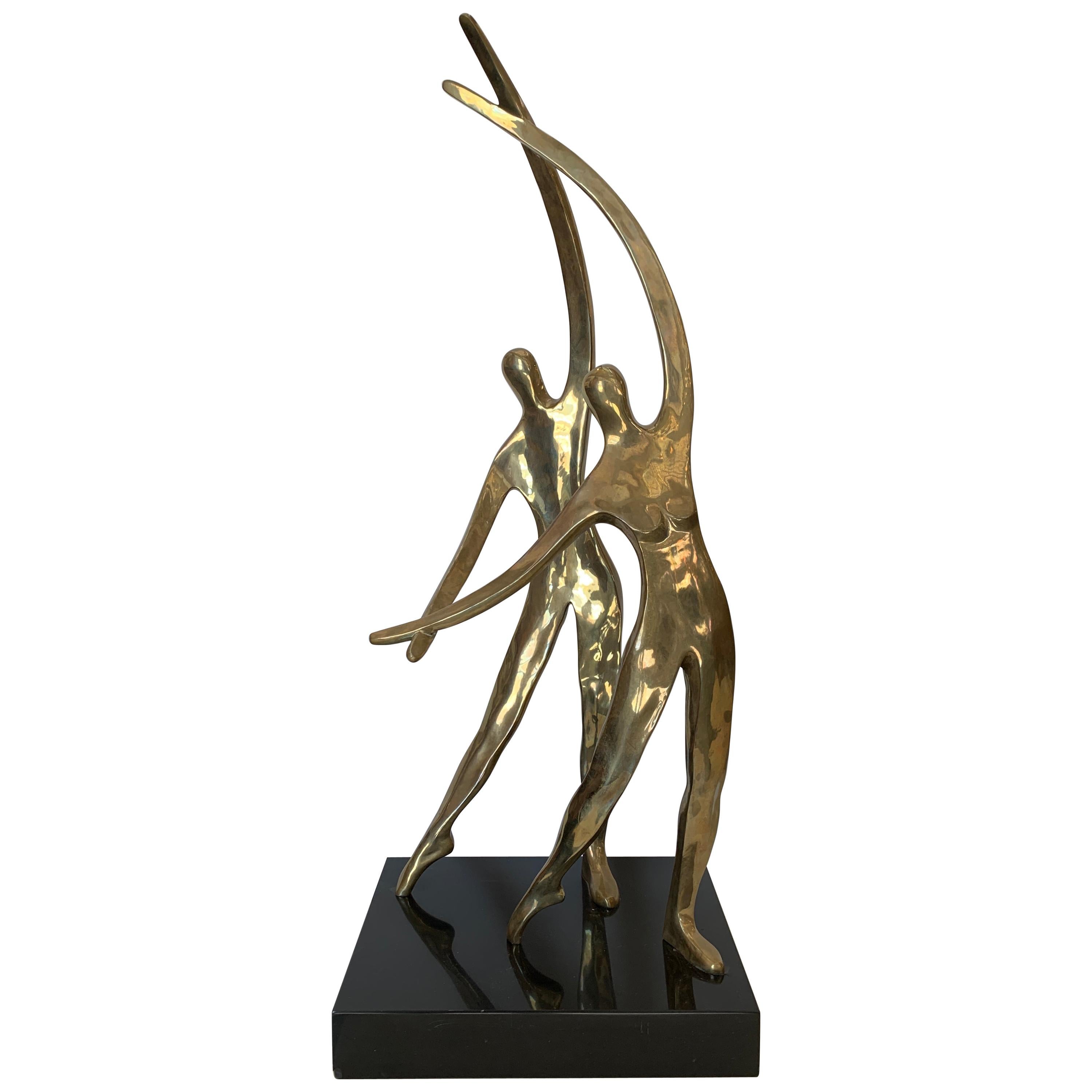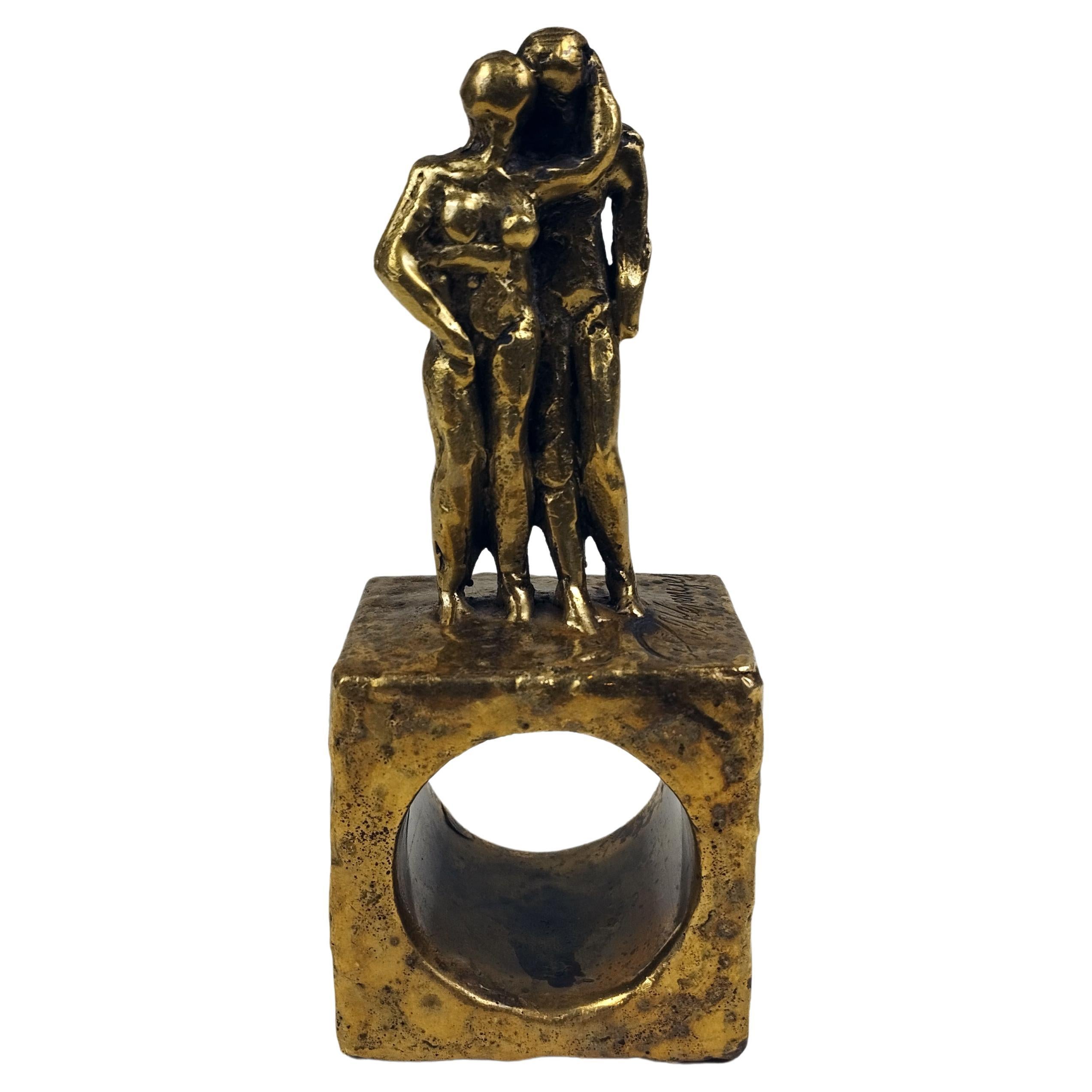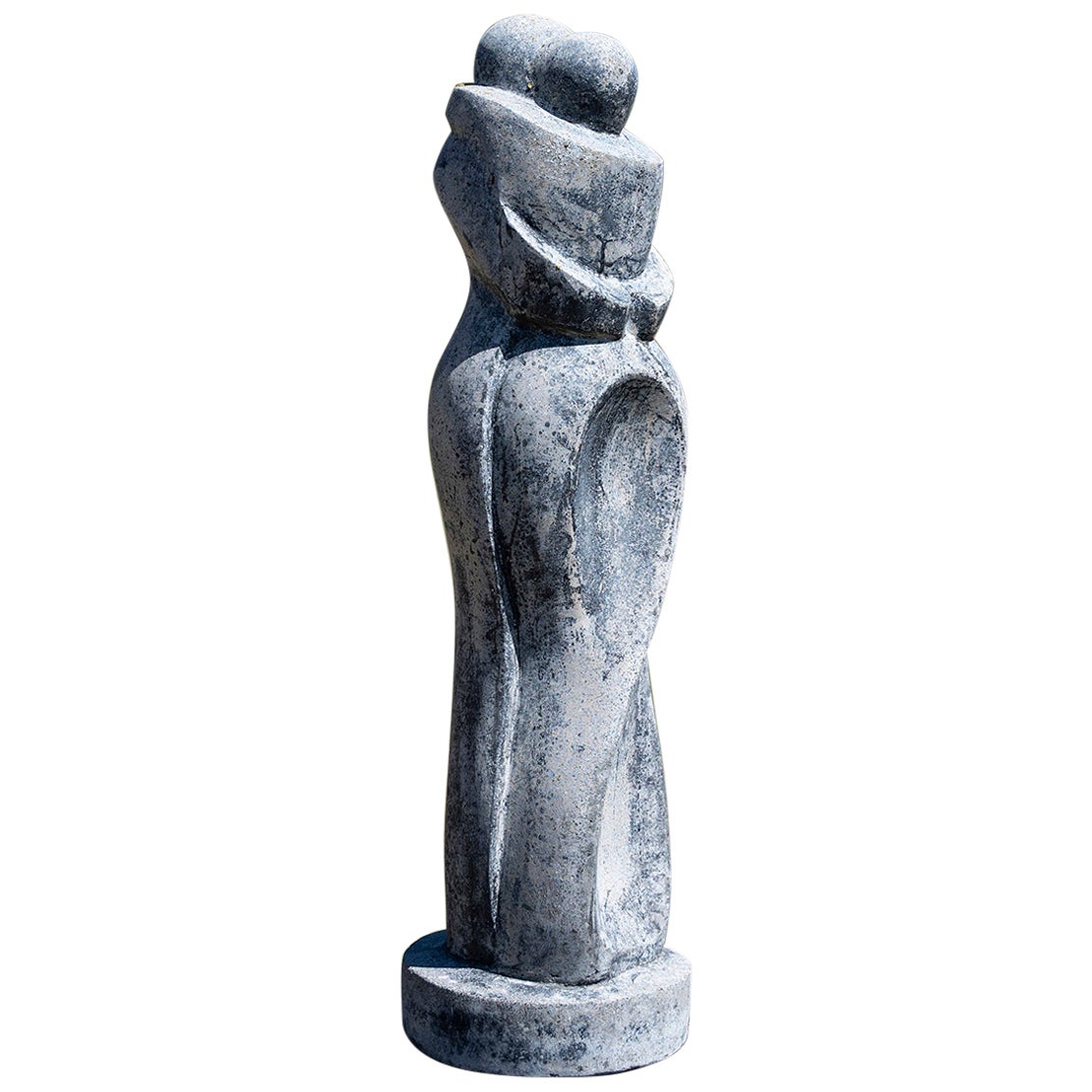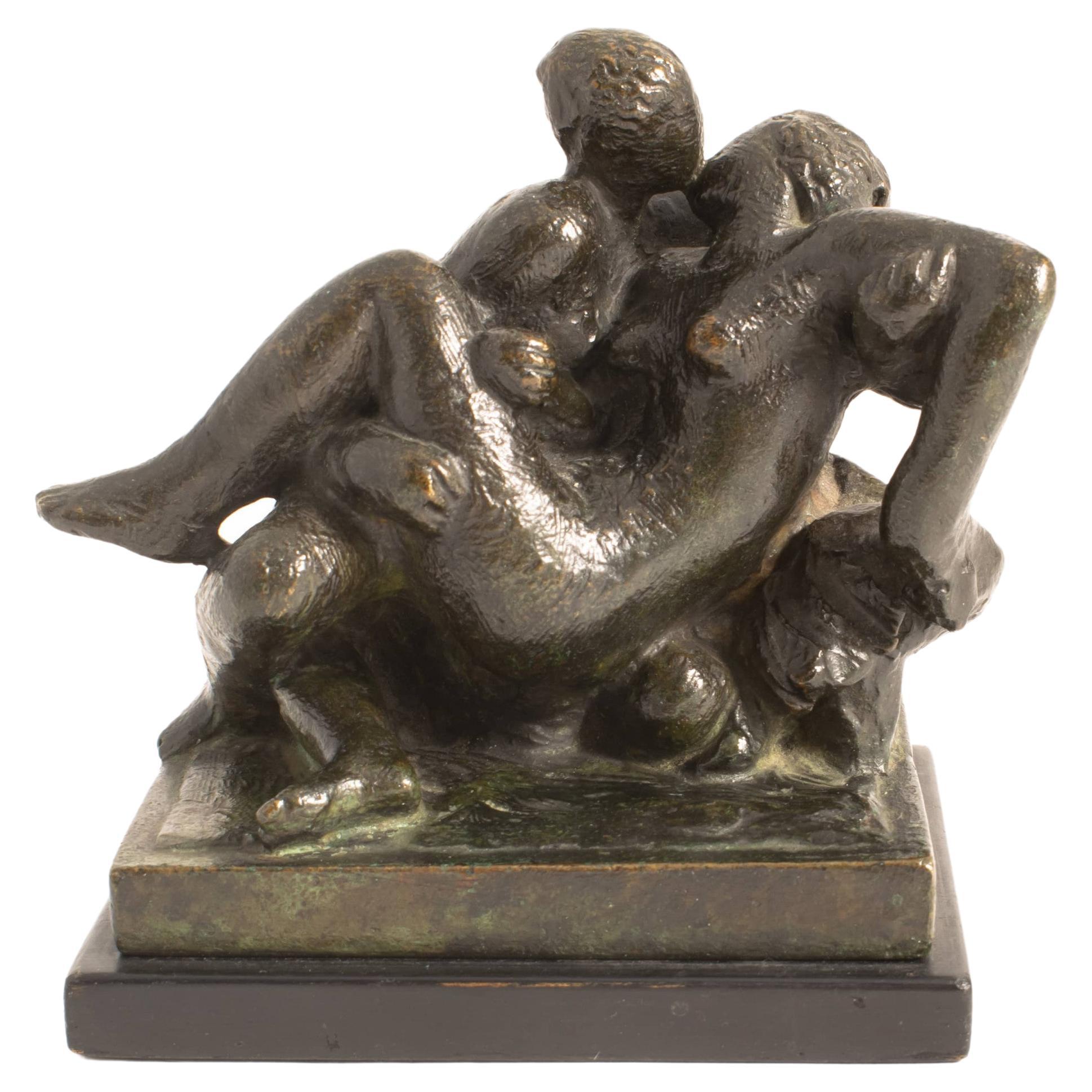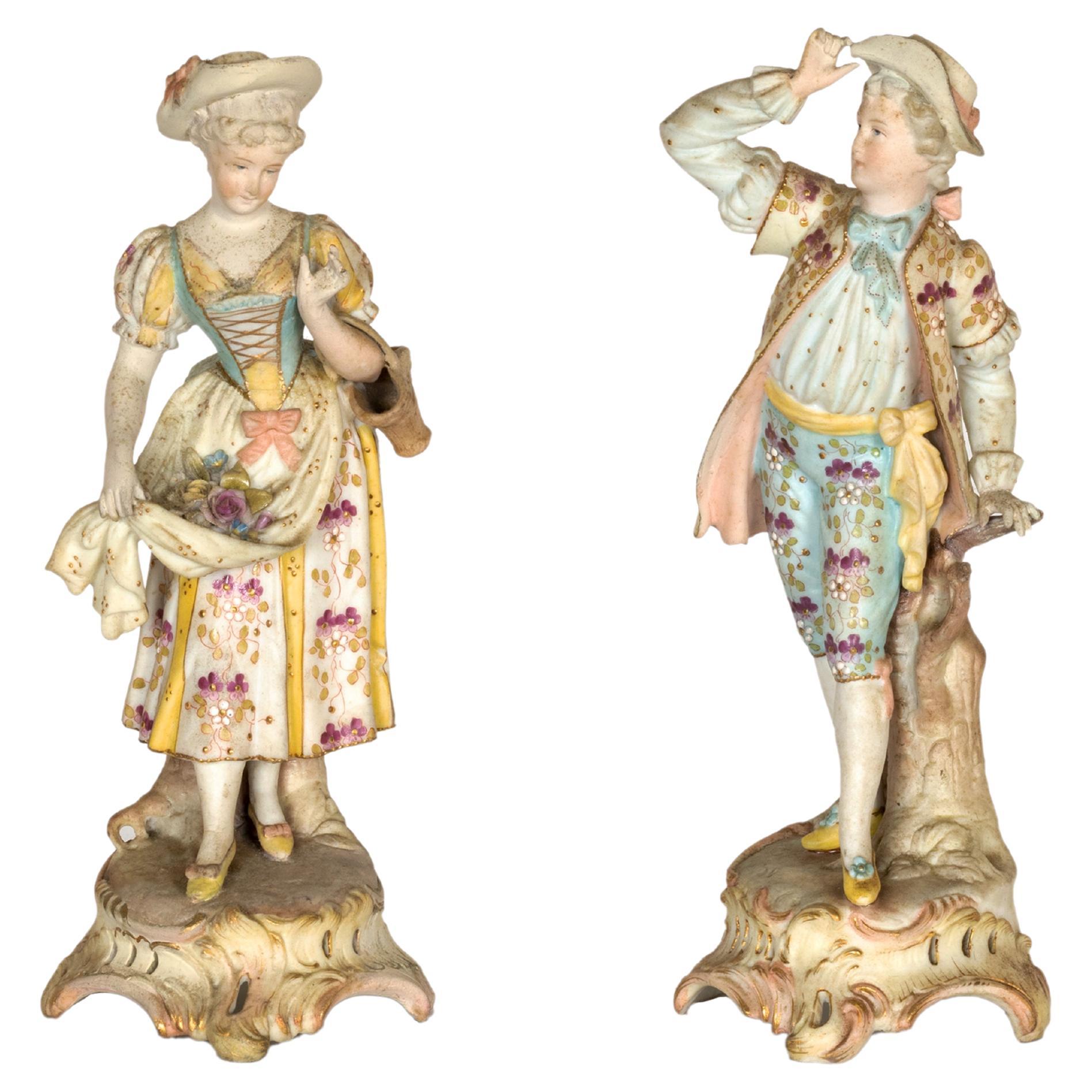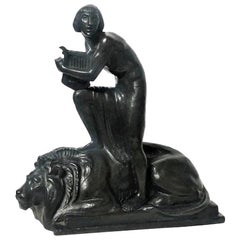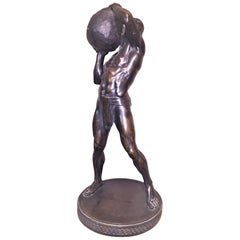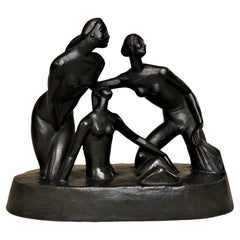
Love Couple, Ernst Seger, German , Bronze
View Similar Items
1 of 4
Love Couple, Ernst Seger, German , Bronze
About the Item
- Creator:Ernst Seger (Sculptor)
- Dimensions:Height: 11.82 in (30 cm)Width: 7.88 in (20 cm)Depth: 4.34 in (11 cm)
- Style:Jugendstil (Of the Period)
- Materials and Techniques:Bronze,Cast
- Place of Origin:
- Period:1900-1909
- Date of Manufacture:Early 20th Century
- Condition:
- Seller Location:Amsterdam, NL
- Reference Number:1stDibs: LU120225939663
You May Also Like
- Ernst Seger, David and Lion, German Art Deco Patinated Bronze Sculpture, c. 1920By Ernst SegerLocated in New York, NYSigned “E. Seger”. Black patina. Dimensions Height: 8 inches (20cm) Width: 7.5 inches (18.75cm) Depth: 8.5 inches (21.25cm) THE BIBLE STORY Samuel 17:34-36 Originally, Saul would not allow David to fight Goliath (17:33). Saul’s reason was simply that Goliath would be stronger than David. David was young and he did not have the experience to fight such a capable enemy as Goliath. David was likely to die, and his death would benefit nobody. Often people wrongly imagine that they are acting in faith (in other words, that they are trusting God). Really, they are acting in a foolish manner, as if the danger is not real. They are not trusting in God, but in their own thoughts, hopes and desires. David’s reply to Saul shows us his attitudes. This reply explains clearly why David had offered to fight Goliath. In other words, it shows how David considered himself able to defeat Goliath. Like many boys and young men in Israel, David had worked as a shepherd. That is, he looked after sheep. He was responsible to look after those sheep in every way. In particular, he had to protect them from wild animals. Lions and bears are some of the fiercest large wild animals. They were common in Israel at the time of the Bible. They are much stronger than a man (see for example 1 Kings 13:24 and 2 Kings 2:24). Only the bravest and strongest men were able to kill a lion (Judges 14:5-6; 2 Samuel 23:20). However, David had killed both a lion and a bear. He had killed animals that were stronger than him. David did not believe that the strongest man would win the fight. David had a close relationship with God; he was trusting God to rescue him (17:37). David was not pretending that there was no danger. However, God’s Holy Spirit was active in David’s life (16:13). By the power of his Holy Spirit, God had given David the faith (trust in God) to fight Goliath. Because David really was trusting God, there was no reason for him to be afraid of Goliath. THE ARTIST Ernst Seger (1865 1939), born in Neurode (Nowa Ruda, now Poland), studied sculpturing from 1884 at the Kunstschule in Breslau under Robert Härtel. From 1886 he worked in the Atelier of Christian Behrens, where he created the Eichendorff-Memorial for the Silezian City of Neisse. From 1893 to 1894 Seger stayed in Paris where he worked in the atelier of Auguste Rodin. However, Seger finally chose a ‘Jugenstill’ and a more ‘naturalistic’ or ‘Neuklassizismus’ style. His sculptures, modelled like the Greek antiques, were later greatly admired by the National Socialists. At the end of 1894 Ernst Seger went back to Berlin, founded his own atelier and created the Kaiser Wilhelm I memorial for the Silesian City of Glatz. In 1897 Seger created the sculpture ‘Jugend’ (‘Youth’), which was displayed at the ‘Große Berliner Kunstausstellung’ in 1898, at the ‘Große Berliner Kunstausstellung’ in 1899, at the ‘Münchener Glaspalast Ausstellung’ in 1899 and at the ‘Münchener Glaspalast Ausstellung’ in 1908. As a sculptor Seger regarded this as his first relevant work, his breakthrough. A copy of the sculpture in bronze, 1.60 metres high, was placed in the ‘Scheitniger Park’ in Breslau (now Wroclaw). In 1898 Segers ‘Diana’, the Roman Goddess of the Hunt, the Moon and Childbirth, was unvealed in Park Szczytnicki, Breslau, Polen (earlier ‘Schneitniger Park’). Until 1945 the sculpture stayed in the Schneitniger Park, Breslau. This part of the park is still called ’Dianagarten’. After the turn of the century the elegant female dancers and nudes by Seger gained great popularity. In 1905 Ernst Seger created -together with the sculptor Bernhard Sehring- the ‘Bismarck Brunnen’ (‘Bismarck Fountain’) in Breslau. This memorial-fountain (which still exists) represents the allegories ‘Kampf’ and ‘Sieg’ (‘Battle and Victory’). Seger’s ‘Verwundete Amazone’ (‘Wounded Amazon’), displayed at the Grosse Münchner Kunstausstellung in the Glaspalast in 1908, was placed in the garden of the ‘Kaufhauses Wertheim’ in Berlin. In the same year he was appointed as a professor. Seger’s marble sculpture ‘Kypris’, created in 1916, was placed in the Alten Nationalgalerie in Berlin. In 1925 the City of Berlin acquired his sculpture ‘Anbetung’ and placed it at the Johannaplatz. ‘Storchenbrunnen’ (‘Stork-fountain’), was placed in 1931 at the Adolf-Scheidt-Platz in Berlin. In 1935 the American newspaper publisher William Randolph Hearst bought Seger’s sleeping ‘Ganymede’. During the Third Reich Ernst Seger was commissioned numerous Hitler busts...Category
Vintage 1920s German Art Deco Figurative Sculptures
MaterialsBronze
- Paul Leibküchler, Sisyphus, German Jugenstil Bronze Sculpture, circa 1900By Paul LeibküchlerLocated in New York, NYThis extremely impressive depiction of Sisyphus, the figure from Greek mythology in darkly patinated bronze as an athletic male figure with energetic facial expression, wearing only a loincloth, stiffening a boulder over his right shoulder, on round, geometrically decorated plinth. In Greek mythology, Sisyphus was the king of Ephyra (now known as Corinth). He was punished for his self-aggrandizing craftiness and deceitfulness by being forced to roll an immense boulder up a hill only for it to roll down when they near the top, repeating this action for eternity. Through the classical influence on modern culture, tasks that are both laborious and futile are, therefore, described as Sisyphean labour. Signed by the artist on the plinth: “Leibküchler fec.” (for Paul Leibkuchler...Category
Antique Early 1900s German Jugendstil Figurative Sculptures
MaterialsBronze
- Richard Bauroth, Bathers, German Jugenstil Patinated Bronze Sculpture, Ca. 1919Located in New York, NYABOUT ARTIST Richard Bauroth (German, 1884-?) was active/lived in Germany. German sculptor, Richard Bauroth studied in Munich et al. under Adolf von Hildebrand. DIMENSIONS Heigh...Category
Vintage 1910s German Jugendstil Figurative Sculptures
MaterialsBronze
- Fritz Christ German Jugendstil 'Judith' Bronze Sculpture on Marble BaseLocated in New York, NYGerman Jugendstil bronze sculpture of Judith holding her sword and the head of Holofernes, made by German sculptor and medallist Frist Christ (1866-1906). The figure of Judith is standing on a hexagonal Egyptian revival marble base with carved hieroglyphs and rams heads. Made in Germany in 1901, the piece is signed and dated on the base of the bronze. In great antique condition with age-appropriate wear and some old repair work, and one of the sun discs atop the rams heads missing. Fritz Christ...Category
Antique Early 1900s German Jugendstil Figurative Sculptures
MaterialsMarble, Bronze
- Jugendstil German Bronze Sculpture of Athlete Throwing a Ball by Schmidt-FellingBy Julius Schmidt-FellingLocated in North Miami, FLJugendstil german bronze sculpture of an athlete throwing a ball (shot put) by Julius Schmidt-Felling By: Julius Schmidt-Felling Materi...Category
Antique Late 19th Century German Jugendstil Figurative Sculptures
MaterialsBronze, Metal, Copper
- Jugendstil German Bronze Sculpture of a Nude Woman with Seashell by LauchhammerBy LauchhammerLocated in North Miami, FLEarly 20th century Jugendstil german patinated bronze Sculpture 'Nude woman with Braids and Seashell' by Lauchhammer Bildguss Foundry By: Lauchhammer Bildguss Foundry Material: bron...Category
Early 20th Century German Jugendstil Figurative Sculptures
MaterialsBronze, Metal
Recently Viewed
View AllMore Ways To Browse
Silver Bronze Statue
Parian Porcelain
Antique European Sword
Bronze Girl Art Deco
Bronze Statue Germany
Art Deco Porcelain Figurine
Austrian Cold Figure
Angel Head Sculpture
Copper Relief Sculpture
Wheat Harvest
Antique Bronze Sculpture Woman
Dore Sculpture
Marble Bas Relief
Heart Shaped Sculpture
Bas Relief Marble
Train Model Large
Italian Putti Carved Wood
Black Marble Male

